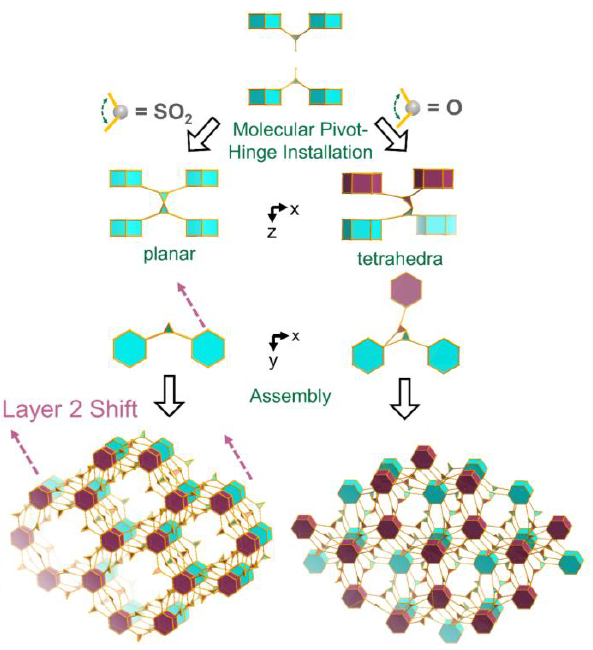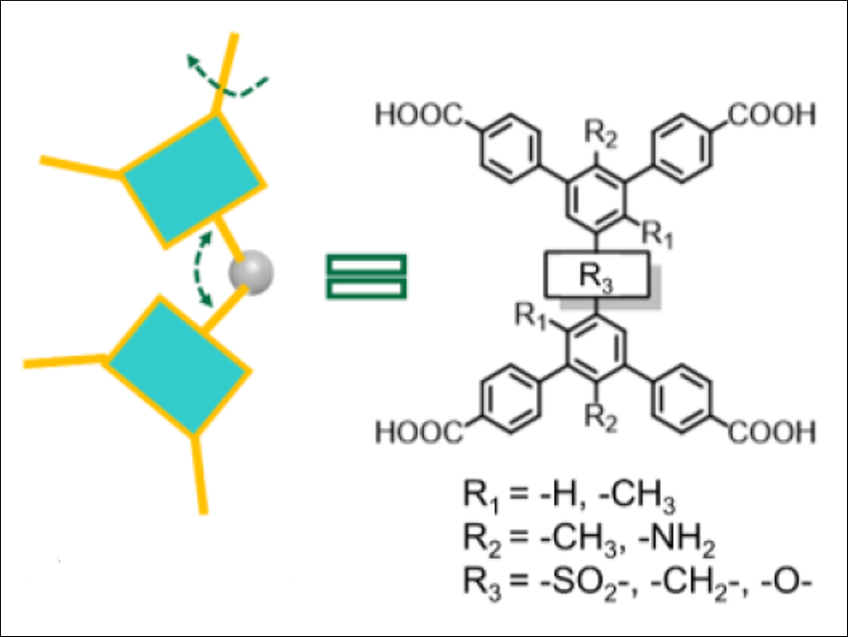The structural diversity of metal–organic frameworks (MOFs) is usually limited by the rigid backbone and high symmetry requirements of their organic linkers. New design strategies could enhance the structural control of MOFs.
Daofeng Sun, China University of Petroleum, Qingdao, China, Hong-Cai Zhou, Texas A&M University, College Station, USA, and colleagues have used desymmetrization in organic linkers to control the topology of rare-earth MOFs. The team placed so-called pivot groups in the center of rotamers (pictured above)—conformational isomers related by rotation about a single σ bond. The linkers can be tuned by introducing substituents R1 and R2 of varying size, or by modifying the pivot group R3.
Solvothermal reactions between these linkers and Eu(NO3)3·6H2O in the presence of 2-fluorobenzoic acid produced MOFs with various topologies. For example, an SO2 pivot group led to an eclipsed packing mode of the layers in the MOF (pictured below on the left). In a MOF with an ether pivot group, a shift of rare-earth clusters led to a staggered stacking mode (pictured below on the right). This strategy allows the systematic design and construction of new MOF topologies for applications such as bifunctional catalysis.

- Molecular Pivot-Hinge Installation to Evolve Topology in Rare-Earth Metal-Organic Frameworks,
Liang Feng, Yutong Wang, Kai Zhang, Kun-Yu Wang, Weidong Fan, Xiaokang Wang, Joshua A. Powell, Bingbing Guo, Fangna Dai, Liangliang Zhang, Rongming Wang, Daofeng Sun, Hong-Cai Zhou,
Angew. Chem. Int. Ed. 2019.
https://doi.org/10.1002/anie.201910717




